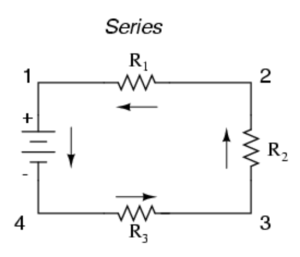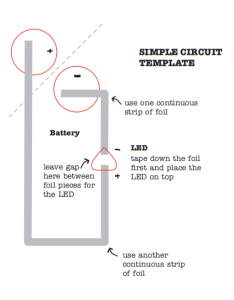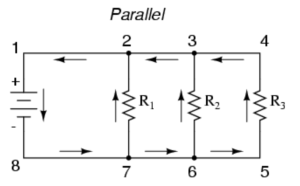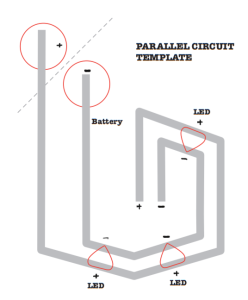What Are Circuits?
A circuit is a closed loop that includes a power source (e.g., a battery) and conductive material to carry the electrons to the output (e.g., a light) and back to the power source.
Series circuits are closed circuits in which the current follows one path.
Parallel circuits are closed circuits in which the current has two or more paths to follow.
In each circuit, the flow of electrons is from negative to positive.
Getting Started with Circuits
PhET Interactive Simulations from the University of Colorado (Boulder) is a fantastic 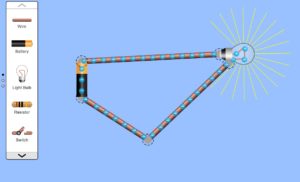 resource for online math and science simulations in general, but their circuitry simulators are both visual and tactile, making them appropriate for learners of all ages.
resource for online math and science simulations in general, but their circuitry simulators are both visual and tactile, making them appropriate for learners of all ages.
Among their circuitry-related simulators are the Direct Current (DC) Circuit Construction Kit, Alternating/Direct Current (AC+DC) Circuit Construction Kit, and the Capacitor Lab. And while it can be fun (and educational) to tinker and play with these simulators, they also feature a curriculum-aligned activity database that can be viewed by clicking here or by clicking the “For Teachers” dropdown under the simulator you’re interested in using. For example, we found this “How Can You Light a Bulb?” activity which provides an activity guide for both students and teachers!
For something more advanced, Circuit Lab is a free, online circuit simulator that enables learners to design and test 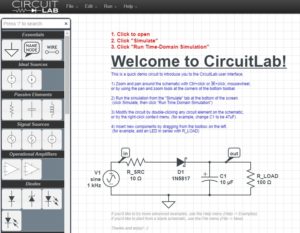 circuit schematics drawings. Developed for higher-level circuitry learners, this tool can help familiarize students with circuit notation and simulate circuitry schematics with advanced graphing output. In addition to their interactive tool, Circuit Lab also features a crowdsourced Electronics Q&A section, as well as access to an online textbook that covers foundational engineering concepts as well as an introduction to linear direct current (DC) electronics. If you’ve already covered the basics and are looking for a higher-ceiling challenge, check this tool out!
circuit schematics drawings. Developed for higher-level circuitry learners, this tool can help familiarize students with circuit notation and simulate circuitry schematics with advanced graphing output. In addition to their interactive tool, Circuit Lab also features a crowdsourced Electronics Q&A section, as well as access to an online textbook that covers foundational engineering concepts as well as an introduction to linear direct current (DC) electronics. If you’ve already covered the basics and are looking for a higher-ceiling challenge, check this tool out!
There are also several wonderful tangible tools for exploring circuits. Papertronics (or 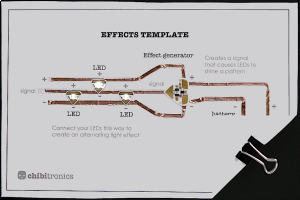 paper circuits) involves using copper tape, coin cell batteries, LED lights, and paper to create simple light-up circuits! These components can be purchased separately to create your own personalized kits, or you can look to commercially-available kits such as those produced by brands like Chibitronics. Their website features a section for educators with links to lesson plans and circuit-building templates that are useful for scaffolding other creative projects (like light-up holiday cards)!
paper circuits) involves using copper tape, coin cell batteries, LED lights, and paper to create simple light-up circuits! These components can be purchased separately to create your own personalized kits, or you can look to commercially-available kits such as those produced by brands like Chibitronics. Their website features a section for educators with links to lesson plans and circuit-building templates that are useful for scaffolding other creative projects (like light-up holiday cards)!
E-Textiles are another creative way to explore hands-on circuit creation. These creations (also referred to as “wearables” or “wearable circuits”) involve the use of fabric, conductive thread, batteries, and LED lights (or other actuators). The sky is the limit! To learn more about e-textiles, check out the video below and this handout by Sarah Barnett and Allison Saunders.
Finally, Makey Makey is an electronic invention kit that enables people of all ages to use 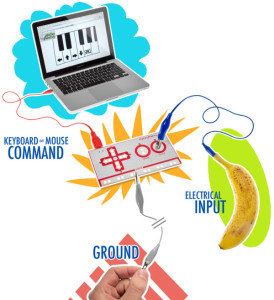 everyday conductive objects and turn them into a keyboard controller. The Makey Makey circuit board allows users to reconfigure the mouse left-click, spacebar, arrow key controls, and other standard computer inputs, which can then be used to play online games, interact with digital musical instruments, and more..
everyday conductive objects and turn them into a keyboard controller. The Makey Makey circuit board allows users to reconfigure the mouse left-click, spacebar, arrow key controls, and other standard computer inputs, which can then be used to play online games, interact with digital musical instruments, and more..
The Scratch coding platform features a Makey Makey add-on, which can extend the functionality of the Makey Makey by having students code games and other interactive projects. To learn more about the Makey Makey, click here to view their introductory video.
Curriculum Connections
Not sure how to integrate Circuits into your teaching plan? Check our list of Ontario curriculum connections for suggestions!
Circuits in the Maker Lab
Laura Morrison explains how e-textiles, Chibitronics, and coding can be incorporated into the classroom.
Circuits in the “Real World”
All electronics and digital technologies rely on circuits. Understanding how to build and fix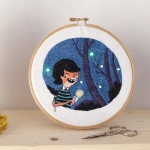 circuits equips individuals with the skills and agency to ‘hack’ or tinker with the surrounding digital world (including computer motherboards, automated systems, and personal/creative projects that rely on circuitry and wiring).
circuits equips individuals with the skills and agency to ‘hack’ or tinker with the surrounding digital world (including computer motherboards, automated systems, and personal/creative projects that rely on circuitry and wiring).
Even modern art pieces and textiles are now embedded with circuitry, fusing the arts and sciences together.

